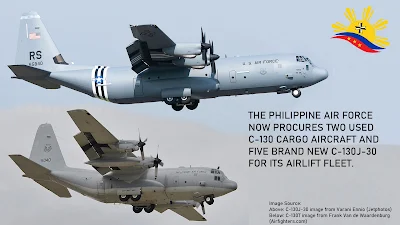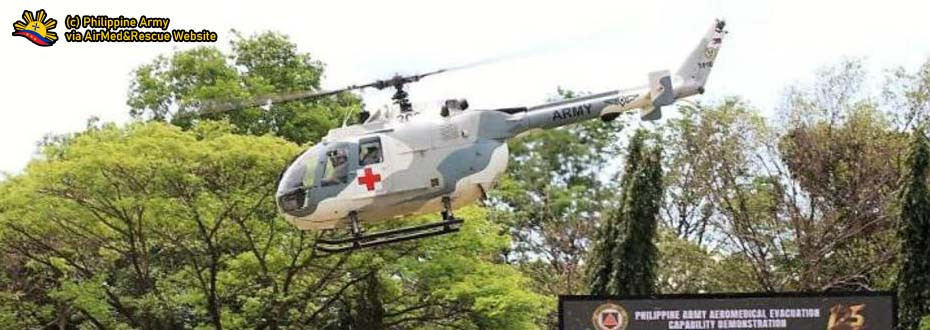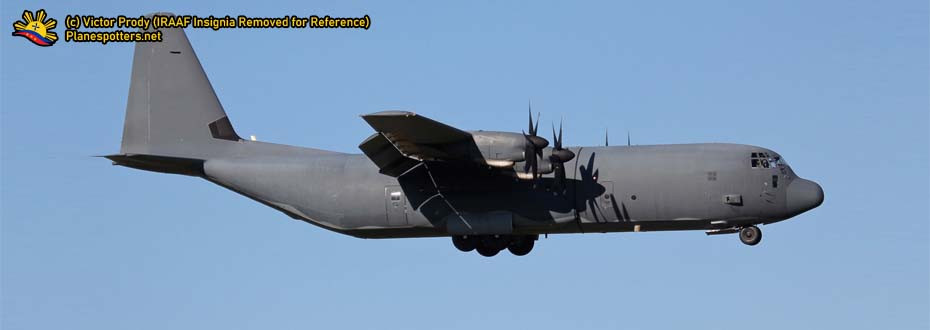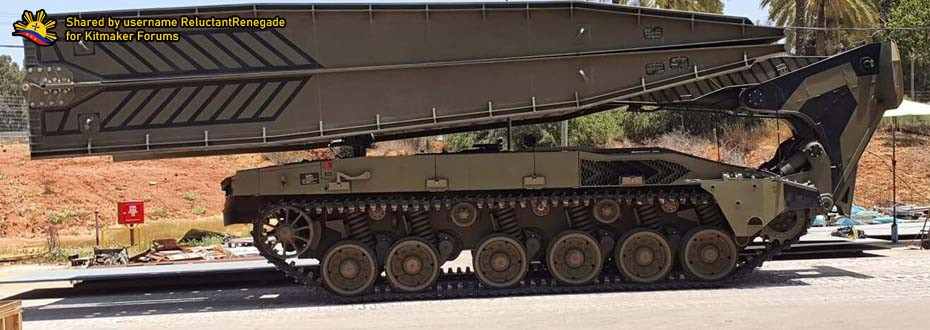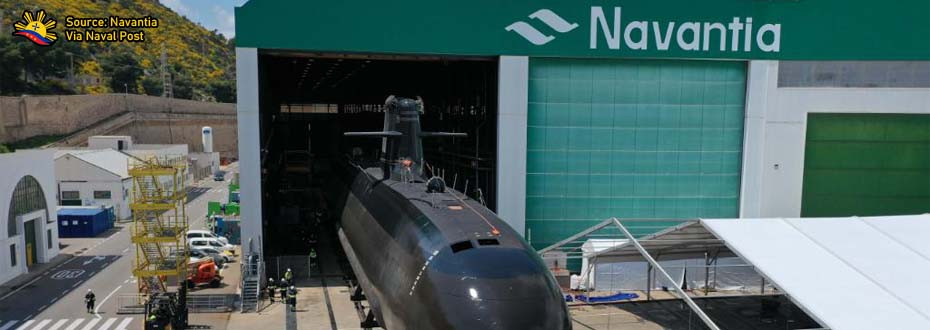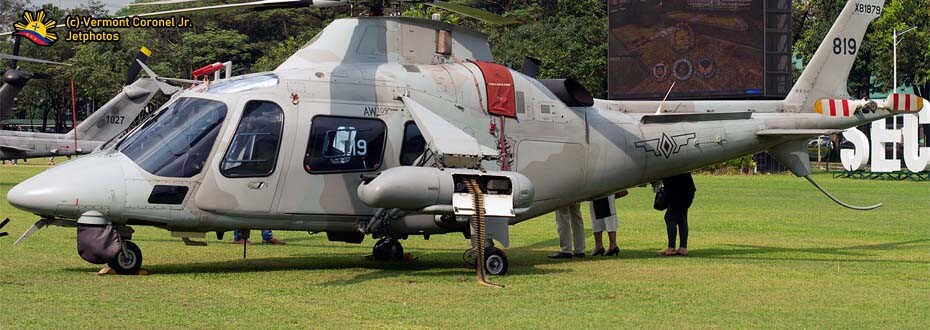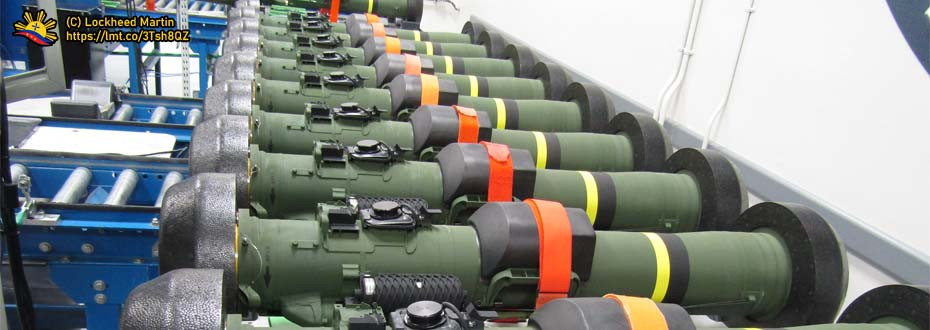As the year ends, let us review and summarize all of the contents that have been written on our website from January up to date as we discussed possible procurement prospects, ongoing projects, defense-related developments, and other matters which may get expounded further as the year 2021 sets in.
Hence, here are the articles that have been written for the year 2020.
THE TOPICS DISCUSSED BY PDA IN THE YEAR 2020
 |
| Our website as of December 31, 2020 |
As of date, there are eighteen (18) articles written on this website for the year 2020 excluding this content wherein it covered multiple defense procurement projects and prospects that are relevant and helpful in improving the capabilities of all branches within the Armed Forces of the Philippines, as well as with other agencies such as those within the Philippine Coast Guard (with content about the Philippine National Police may get added by next year).
Here are those articles were written which may help accessible through this summary and also for easier referencing of the compilation of contents that were added within this year. Note that the months indicate the period each article was published on this website.
January
1. Indonesian APS-3 Panser Anoa 6x6 Armored Personnel Carrier for the Philippine Army?
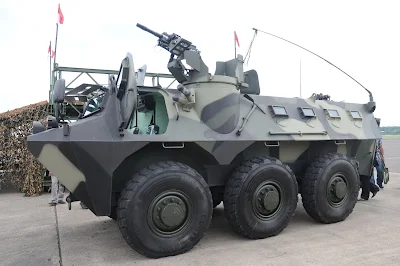 |
Indonesian-made Armored Personnel Carrier offered to the
Philippine Army. Obtained via Wikimedia Commons. |
This is PT Pindad's offer to the Philippine Army for its Wheeled Armored Personnel Carrier program in the hopes that it will bag the contract along with the Harimau Hitam Medium Tank which is for another Philippine Army project, referring to the Light Tank Acquisition Project.
As of December 31, this platform was lost to a competitor which is Elbit Systems whose offer came in the form of a Brazilian-made IVECO VBTP-MR Guarani 6x6 Wheeled Armored Personnel Carrier will be tackled along with this summary, in the same way, that PT Pindad lost to this similar Israeli-based manufacturer with regards to the Light Tanks wherein the Sabrah Tank option was chosen (a separate discussion will be provided for Elbit's Sabrah Tank offer to the Philippine Army).
More information on the link here.
2. The Idea of having AGM-84 Harpoon Missiles in the Philippine Air Force
 |
An AGM-84 Harpoon Missile fitted onboard a U.S. Navy F-18 aircraft.
Image Source. |
This discusses Boeing's offer of an air-based, anti-ship missile for the Philippine Air Force in line with its another offer - the AH-64 Apache Helicopters that participated in the Attack Helicopter Acquisition Project which was approved for sale by the United States through its DSCA report, although it was lost to the T-129 ATAK Helicopter of the Turkish Aerospace Industries which is currently plagued with problems due to U.S. CAATSA against Turkey on their sale of S-400 air defense systems from Russia.
The marketing pitch provided is in augmentation with another Air Force project which is the Multirole Fighter Jet Program wherein the likes of F-16 Viper is preferred, wherein this missile is compatible with the aircraft as plug and plays given that both are produced by two American defense and aerospace companies that are also designed in having interoperability within the U.S. Armed Forces.
Currently, there is little information since this development and it is most likely be nothing more of a marketing pitch by Boeing, with uncertainties also lying ahead for the Philippine Air Force Multirole Fighter Acquisition Project.
More information on the link here.
3. The Necessity of Having Military Cargo Platforms for Logistics and HADR Operations
 |
A non-combatant platform such as the BRP Davao del Sur (LD-602) is
just as essential as other firepower-capable warships that the
Philippine Navy obtains. Image from DVIDSHUB. |
This discussion only highlights the importance of cargo logistic platforms in which goes hand in hand with combatant platforms in attaining the primary objective which is to accomplish what the mission and its requirements want to achieve.
Logistics platform varies from Combat Utility Helicopters and Airlift Cargo Aircraft of the Philippine Air Force to the Landing Platform Docks and Landing Craft Units of the Philippine Navy, as well as Utility Trucks and Armored Personnel Carriers of the Philippine Army.
These assets are also useful for Humanitarian Assistance and Disaster Response operations as the country is ravaged by multiple instances of Typhoons and Earthquakes, rendering several citizens affected helpless and in need of immediate necessities as the recovery process ensues in time.
More information on the link here.
4. How Really Important PH-US Visiting Forces Agreement is for the Philippine National Defense?
 |
Both the troops from the United States and the Philippines have
participated in exercises like those for KAMANDAG 3 as specified
in the image above. From DVIDSHUB. |
This article simply talks about the advantages and disadvantages of an alliance with the United States has especially in terms of defending one after the other as stipulated in the 1951 Mutual Defense Treaty.
This comes as the current administration gives threat to ending the PH-US Visiting Forces Agreement which in itself is essential in augmenting the Mutual Defense Treaty into effect, as well as another agreement which is EDCA or the Enhanced Defense Cooperation Agreement that also helps to improve the defense of the country as the Modernization efforts of the Armed Forces of the Philippines is in effect.
February
5. The Jose Rizal-class Frigates taking Shape
 |
The ship's design is presented in ADAS 2018. Image obtained via
Wikimedia Commons. |
It refers to the developments that took place for the two most sophisticated vessels the Philippine Navy may have to date, which are the BRP Jose Rizal FF-150 and the BRP Antonio Luna FF-151.
Both of the ships, at the time of the article, are in the process of finalization and test trials that ensure the performance of both vessels are within the requirements set and also its final form being refined before being delivered to the end-user amidst the issue surrounding its subcomponents, notably with its Combat Management System.
At the time of this writing, the BRP Jose Rizal FF-150 have already entered service within the Philippine Navy, with the ship's commissioning into active service took place around July 2020 with the BRP Antonio Luna expected to enter service by the first quarter of the year 2021.
March
6. List - Military Assets Provided by the United States to the Philippines
 |
Things in the list include this C-130 Cargo aircraft that carries
troops, equipment, and relief goods in areas of concern such
as combat zones and disaster-stricken areas. (c) Kit Agad, Jetphotos. |
The article simply provided a list of military assets that the United States provided to the Philippines from the 1950s where it was a newly independent nation that still recovering from the Second World War until the present at the time the article was published as most of the platforms in service within the Armed Forces of the Philippines were originated from the United States as either new or used platforms utilized by a branch of the U.S. Armed Forces such as the Del Pilar-class Offshore Patrol Vessels which were once known as the Hamilton-class cutters of the United States Coast Guard.
Take note that also came with offers like the AGM-84 Harpoon missile aforementioned above as well as other prospective offers like the ones for AH-1Z Viper and AH-64 Apache Attack Helicopters, and the F-16 Viper offered for the Philippine Air Force Multirole Fighter Acquisition Program.
7. Summary of the President's Press Conference on COVID-19
 |
This scenario involves CBRNE Capabilities or things that involve
Chemical, Biological, Radiological, Nuclear, and Explosive matters.
Image obtained from DVIDSHUB. |
It only provided important details at the time the article was published as the country plunged down into respective community quarantines and restrictions as inflicted by the COVID-19 Coronavirus which have rendered the country's economic activities at a standstill.
8. South Korean KT-1 Woongbi for the Philippine Air Force?
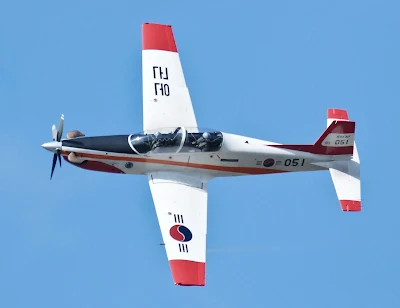 |
This is an aircraft produced by Korean Aerospace Industries,
the same manufacturer of the FA-50PH that the Philippine
Air Force obtains. |
Made by the same manufacturer that produces the FA-50PH Lead-In Fighter Trainer of the Philippine Air Force, the KT-1 Woongbi is aspired by the Korean Aerospace Industries or KAI to be its candidate for the Basic Trainer Acquisition Program of the Philippine Air Force, with the aims of cementing KAI's foothold in the Philippine Defense Market.
Take note that the Philippine Air Force obtains its own fleet of SIAI/Marchetti SF-260 as its own trainer aircraft in which platforms like the KT-1 Woongbi may be seen as an ideal candidate for this specialized type of air platform.
As of date, there are currently no updates with regards to this development although that does not mean that it doesn't push through.
April
9. The Importance of Having CBRNE Defense Capabilities In The Armed Forces
With the pandemic ravaging a nation's economy and its citizen's way of life, a discussion regarding CBRNE or a nation's defense against Chemical, Biological, Radiological, Nuclear, and Explosive threats became a highlighted topic as units specialized in this field aims to fight and deter such kind of scenario involving other forms of harmful material that is not necessarily done in conventional combat.
In this topic, it was also shown with regards to the importance of such unit at the times that they were needed such as in the current pandemic situation as it requires a different approach in dealing with the situation rather than the usual firepower that conventional combat usually brought on.
10. Knowing the Soon-to-Have Kunigami-class Multirole Response Vessels of the Phil. Coast Guard
 |
The type of vessel that the Philippine Navy seeks out for its fleet.
Image courtesy of Wikimedia Commons. |
The Philippine Coast Guard is soon to have a larger vessel in its fleet than the one it currently obtains, in which these 94-meter vessels will derive from the ones currently in service within the Japanese Coast Guard (as seen in the image above).
Construction of these vessels will be done by Mitsubishi Shipbuilding Ltd, a subsidiary of the Mitsubishi Heavy Industries which is known to built multiple civilian and military vessels particularly for the Japanese Maritime Self-Defense Force, Japan Coast Guard, and also for Japanese maritime companies which cement their reputation in the shipbuilding business.
Currently, the largest vessel in service within the Philippine Coast Guard is the French OCEA-produced BRP Gabriela Silang OPV-8301 which was launched in July of 2019.
May
11. The Idea of Having Dedicated Hospital Ships in the Philippine Navy
 |
The KRI Semarang, a Semarang (Tarlac-designed)-class Landing
Platform Dock was designed to be a hospital ship in service
within the Indonesian Navy (TNI-AL). Image Source. |
Still, with the Coronavirus Pandemic, the idea of having hospital ships are in the picture as a civilian shipping line lends its vessels as an isolation area for quarantine although this was shown disadvantages in that idea as the environment inside a vessel make it more contagious for this option to consider.
On the other hand, the idea of having these platforms are helpful in times of combat as wounded troops have an offshore platform that will help cope with healing their body from the stress and destruction of the battlefield which makes these assets a morale booster and a guarantee of survival for the soldiers get fit once again into combat to fight another day against threatening elements of the nation.
Just like the Tarlac-class Landing Platform Docks that the Philippine Navy obtains, these hospital ship platforms are also helpful for Humanitarian Assistance/Disaster Response operations as medical services may get available for citizens affected by natural calamities that render local clinics and hospitals partly or fully inoperable, if not filled with a surging amount of patients that these platforms serve as an augmentation of medical facilities.
12. The Prospects in Boeing's Push for AH-64 Apache Helicopters in the Philippine Air Force
 |
This platform is being looked like one of the preferred candidates
for the Philippine Air Force Attack Helicopter Acquisition Project.
Image Source. |
Provided in a DSCA notice along with AH-1Z Viper, the AH-64 Apache Helicopters obtain the opportunity for Boeing to provide as a candidate for the Philippine Air Force's Attack Helicopter Acquisition Program which is also being completed by Turkish Aerospace Industries' T-129 ATAK Helicopter.
The article detailed its capabilities, specifications, and weapons fitted in which it will mean a lot for the country's Close Air Support capabilities shall this platform be considered during the time this content was published.
Currently, the Attack Helicopter Acquisition Project was bagged by Turkish Aerospace Industries who obtain the promise of delivering these assets even though their platforms obtain an issue in securing its engine all thanks to the current sanctions that the United States imposed against the country under CAATSA or Countering America's Adversaries Through Sanctions Act, primarily aimed against Russia.
June
13. Boeing's AH-6i Light Attack Helicopters and the Philippine Army's Aviation Regiment
 |
This helicopter may soon comprise the Philippine Army
Aviation Regiment shall this be considered.
Obtained via Wikimedia Commons. |
With the Philippine Army forming a new aviation regiment as part of its re-organization setup alongside with those of the army artillery regiment (which may obtain the Land-Based Missile Systems or LBMS and the Multiple-Launched Rocket Systems or MLRS later on), this service branch seeks to have additional air assets that will supplant its own close air support operations alongside assets that the Philippine Air Force currently operates.
This development came with the idea of having AH-6i Light Attack Helicopters which is basically an improved variant of the MD-500 series, of which MD-520MG that the Philippine Air Force obtain is also part of which both share the same design attributes and also several subcomponents that may render it compatible between one another.
Currently, there are few updates about this development although it remains to be seen as to whether this project pushes through as it goes with the needed assets for the Philippine Army's Aviation Regiment to operate with such capabilities on hand.
August
14. Knowing the Philippine Air Force A-29 Super Tucano Close Air Support Aircraft
 |
An Afghanistani Air Force A-29 Super Tucano Close Air Support Aircraft.
Obtained via Wikimedia Commons. |
This year, the Philippine Air Force received all six of its A-29 Super Tucano Close Air Support Aircraft from Brazil in what was considered its maiden flight that traverses from Brazil's Sao Paulo to the Philippine's Subic, passing through multiple stops along the way as it traveled along the Atlantic Ocean, then through the Mediterranean to Egypt, then through the Middle East and India, until it passed through Thailand and Vietnam as the last two checkpoints, totaling thirteen refueling/reprovisioning points along the way.
These A-29s obtain will currently augment the existing OV-10 Broncos in the inventory until such time that a sufficient number of such platforms will be procured, replacing these older close air support aircraft outright.
September
15. Glancing the Philippine Air Force's Recent C-130 Purchases
The Philippine Air Force aims to have additional airlifters in its fleet alongside existing platforms that comprise its 220th Airlift Wing composed of currently-serviceable C-130s and C-295s that were purchased under the Revised AFP Modernization Program or R.A. 10349.
The procurement option ranges from refurbished U.S. Military aircraft down to brand new C-130J-30 stretched cargo aircraft in which its funding was secured and is slated to be materialized in 2021 shall things proceed accordingly to their planning timeline.
This development is as essential as others given that these cargo aircraft carry supplies and personnel that are needed not only in combat but also in peacetime especially in HADR operations or Humanitarian Assistance and Disaster Response.
November
16. The Iveco VBTP-MR Gurani 6x6 Armored Vehicle and the Elbit Offer to the Philippine Army
 |
A set of VBTP-MR Guarani Armored Personnel Carriers |
This platform was chosen for the Wheeled Armored Personnel Carrier project of the Philippine Army, effectively augmenting existing ones such as the GKN Simba and V-150 Cadillac Gage Commando.
The platform was built by an IVECO factory in Brazil in collaboration with Brazil's Army Technology Center in which produces such armored vehicles for the Brazilian Army, with exports being in Argentina and Lebanon alongside the current orders that the Philippine Army recently made which renders them the fourth (4th) user of such platform across the world.
Having these vehicles, with the help of Elbit which is a contributor to this project, gives a significant gain for the Army's capabilities especially in protecting its troops into combat with counterinsurgency operations still being a thing in the country.
17. Discussing the Philippine Air Force's C-295 Medium Lift Aircraft Fleet
 |
One of the C-295 Medium Lift Aircraft that the
Philippine Air Force obtain.
Copyright provided on the image.
|
Alongside the C-130s and F-27 Fokker Friendship aircraft, the 220th Airlift Wing also obtains these newer cargo aircraft coming in the form of C-295 Medium Lift Aircraft which was produced by Airbus Military through EADS-CASA in Spain.
Augmenting the two different airlift platforms, the C-295 is useful in both combat and Humanitarian Assistance/Disaster Response operations as it decreases the cargo load that was once primarily assigned to the C-130s that the Philippine Air Force still obtains until the present, in which it will be added more in the previous article aforementioned.
Eventually, these sets of aircraft may replace the aging F-27 along the way as the older platform gets more expensive to maintain, as well as there goes the idealistic option that the Philippine Air Force may consider the Maritime Patrol Aircraft version of the C-295 as it is one of the candidates for the Long-Range Patrol Aircraft Acquisition Project.
December
18. Understanding the Philippine Navy's Beechcraft TC-12 "Huron" Aircraft Acquisition Plan
As the final article entry of the year for Pitz Defense Analysis, this entry discusses the Philippine Navy's plan of procuring TC-12 Hurons from the United States which goes similar to the TC-90 King Airs that the service branch obtained from Japan through a donation in original transaction terms being a lease.
Additional platforms like these are meant to supplement maritime patrol aircraft that the Philippine Navy needs in monitoring the country's maritime domain, especially with the Naval Air Wing increasing its capabilities further along the way. Take note that this is different from the Long-Range Patrol Aircraft project of the Philippine Air Force although it attains a similar objective of monitoring maritime domain with the air force version having more loitering time.
Here, we complete the 18 articles that were published for the year 2020 here on the PDA website. It comes with hopes, dreams, and aspirations that more updates will be coming out with existing assets will be discussed on this website as the year 2021 approaches fast with new developments, discussing Philippine military and defense topics in detail.
For our readers, we may wish a prosperous, healthier, and better New Year 2021 with a positive mindset, better well-being, and a humanistic principle to one and all.














